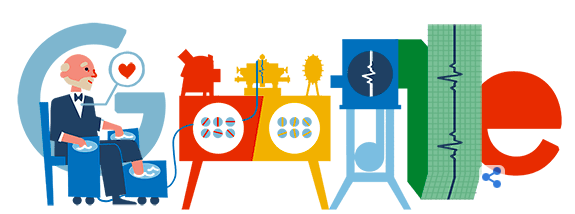Search engine Google has given electrocardiography pioneer Willem Einthoven his own Google doodle on its homepage to mark what would have been his 159th birthday.
In 1895 the Dutch doctor and physiologist invented the string galvanometer, which was the first practical electrocardiogram (ECG) capable of recording electrical activity of the heart at levels adequate for diagnosis. Prior to his development of ECG at Leiden University, the only way to record electrical activity was with a capillary electrometer.

Willem Einthoven Google doodle
Einthoven’s original ECG machine weighed 270kg and required five operators to oversee the water cooling for its powerful and heavy electromagnets. Patients had to be seated with both arms and left leg in buckets of saline solution, which acted as electrodes to conduct the current from the skin’s surface to silver-coated glass filaments. The three points of electrode contact on these limbs produces what is known as Einthoven’s triangle, a principle still used in modern-day ECG recording.
Einthoven also developed the terminology such as P, QRS and T deflections that are still used in modern electrophysiology.
He received the Nobel Prize for Medicine for his invention in 1924.
The Google acknowledgement is the latest in a series of doodles in the last two weeks dedicated to great medical innovators including for Lucy Wills, the first person to highlight the role of folate in combatting macrocytic anaemia and Georgios Papanikolaou, inventor of the Pap smear test.